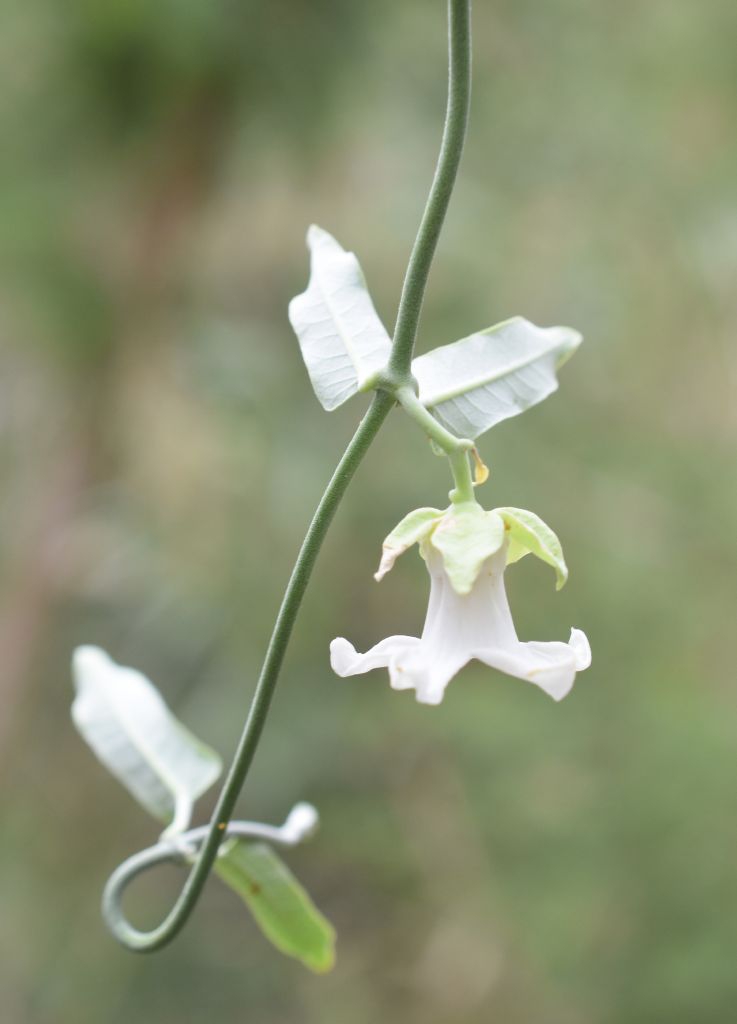A significant environmental weed in NSW and Queensland, and a minor environmental weed in Victoria and South Australia.
Also called ‘Cruel Plant’ as it catches butterflies and moths.
Green climber vine with green triangular leaves. It can grow up to 5 m long/high with clusters of pink-white flowers. Large green ribbed fruit resemble turn brown before splitting to shed masses of white cotton-like seeds.
Leaves
Green triangular to oval leaves 3 - 11 cm long and 1.5 - 6 cm wide with pointy ends and curling edges. Scattered hairs on upper surface with lower surface smooth with minimal fine hairs.
Flowers
Bell-shaped tubular flowers have five sepals (8 - 13mm long) and five petals (18 - 20 mm long) that are fused at the base. The tips of the sepals (calyx lobes) and petals (corolla lobes) are usually curved outwards or backwards. Flowers may be white or pale pink and sometimes have darker pink streaks in their throat. Flowers are borne in 2 - 5 flowered clusters (cymes), 2 - 2.5 cm diameter.
Fruits/Seeds
The large fruit are egg-shaped or have a flattened base and resemble ‘chokos’, pale green colouring with thick ribbed walls; 6 - 10 cm long and 5 - 7 cm diameter. When mature, they become woody, turn brown in colour, and split lengthwise down one side to release hundreds of wind-borne seeds. These seeds (4 - 8 mm long) are blackish in colour and topped with a tuft of long white silky hairs 20 - 30 mm long.
Field Guide
Improve your identification skills. Download your Moth Vine field guide here!





